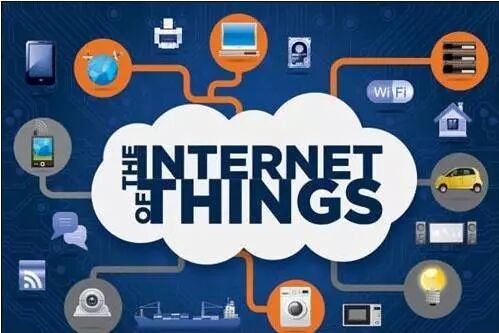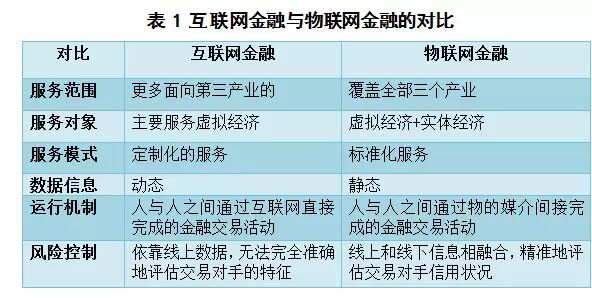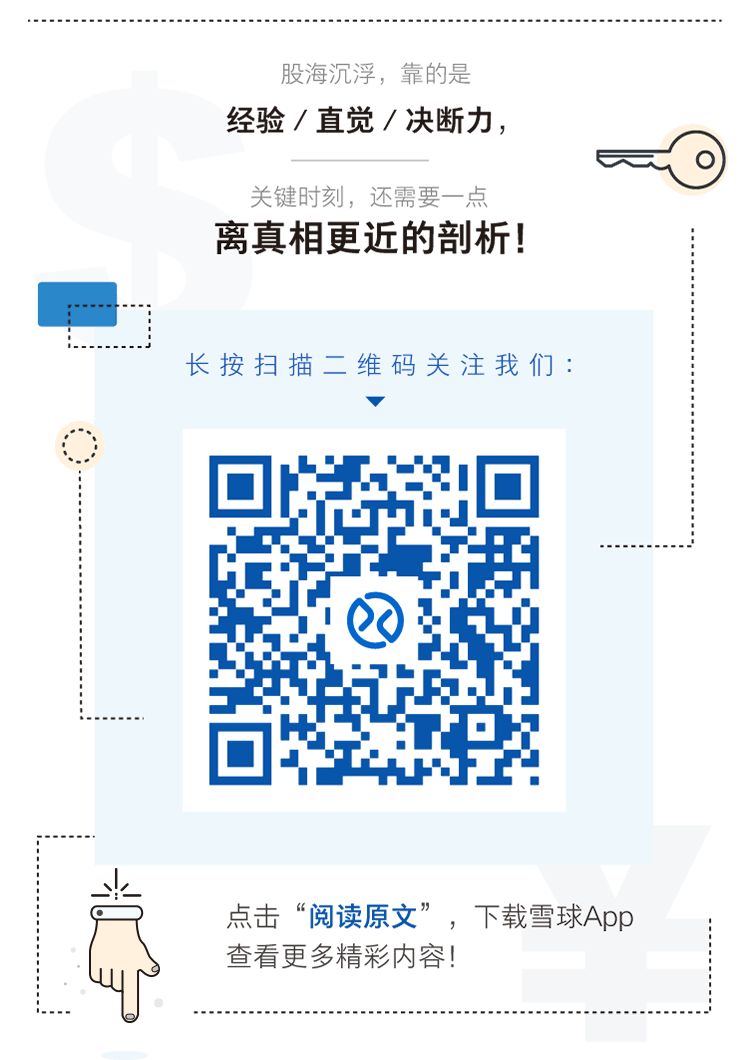For stock trading, just rely on Xueqiu
Xueqiu provides you with analyses that bring you closer to the truth every night
Bill Gates once expressed his regret in his book “The Road Ahead”:
“The Internet only connected computers, not everything else.”
The upcoming era of the Internet of Things (IoT) can remedy this regret of Bill Gates.
Recently, the World Internet of Things Expo was held in Wuxi, Jiangsu, alongside the 2017 World IoT Finance Summit. One cannot help but ask: as the next major trend, what impact will the IoT have on the financial industry? Looking at the history of financial development both domestically and internationally, every innovation in finance has been driven and iterated by the latest technologies. The year 2017 is referred to as the year of financial technology, and the explosive growth of IoT technology in financial technology will bring what changes to internet finance? To answer these questions, let’s start with the concept of IoT finance.
What is IoT Finance?
To understand IoT finance, we must first understand what the Internet of Things is.
As the name suggests, the Internet of Things (IoT) is the internet that connects everything. It connects various objects we can see, touch, or think of, from small items like rings and watches to large ones like refrigerators, washing machines, cars, and airplanes, achieving the “intelligence” of everything through network connections.

Let’s use a simple analogy to help everyone better understand the concept of IoT. Currently, traffic lights on the road control cars and pedestrians. In the IoT era, traffic lights should be controlled based on pedestrian and vehicle flow, changing according to the variations in these flows.
Based on the IoT, financial institutions utilize IoT technology and information communication technology to realize new financial services such as payment, capital flow, investment, asset management, and information intermediation, which we refer to as IoT finance. In other words, IoT finance is a new form of financial business.
What kind of financial revolution will it bring?
The deep integration of IoT and finance allows finance to leverage IoT technology to enhance service experience, reduce operational costs, and achieve the unification of capital flow, information flow, and physical flow, thereby transforming the financial credit system, controlling financial risks, and profoundly changing the existing models in various financial fields such as banking, securities, insurance, leasing, and investment, leading to a new financial revolution. Specifically:
First, IoT finance strongly promotes financial innovation and expands the scope of financial services.
The collaborative effect of technological advancements driven by IoT, institutional changes, and market demand has triggered a large number of financial innovations. Among them, the technological advancements brought by IoT will provide new production possibilities for financial services, serving as the foundation for financial innovation; the demand changes brought by IoT will drive the improvement of infrastructure and the expansion of market scale, serving as the direction and driving force for financial innovation. In other words, IoT brings not only innovations in financial products and tools but also a revolution in financial concepts and models, making previously impossible innovative services possible. For example, the investment in scarce goods such as luxury items, jewelry, and high-end wines (commonly referred to as alternative investments) typically requires significant human resource investment, which is costly. However, with the application of IoT technology, the threshold for such services can be rapidly lowered.
Second, IoT can solve the problem of information asymmetry, significantly reducing the intermediary costs of credit exchange.
In the IoT finance model, one can grasp the shape, location, space, and value conversion of items anytime and anywhere, and information resources can be fully and effectively exchanged and shared, completely resolving the issues of “information islands” and information asymmetry. For instance, regarding the malicious insurance fraud in auto insurance, IoT terminals can be installed on insured vehicles to comprehensively assess driving behavior and determine premium levels based on driving habits; in the event of an accident, the IoT terminal can inform the insurance company in real-time about the behavior of the vehicle involved, allowing the insurer to know whether it was a traffic accident or intentional without needing to be on-site. This resolves the issue of information asymmetry, better controls risks, and reduces the costs of financial services.
Third, IoT finance promotes effective risk management.
The financial industry is essentially a risk management industry, and risk control is key to financial development and innovation. IoT enables the financial system to comprehensively perceive the behaviors of the physical world from both time and space dimensions, tracking history, controlling the present, and predicting the future, allowing financial services to be integrated into every aspect of physical operations, which is beneficial for comprehensively reducing financial risks.
For example, the UK company Insurethebox installs a box containing GPS, motion sensors, SIM cards, and computer software in vehicles to track and locate stolen cars, assisting customers in recovery. When the box detects a collision or accident, the company calls the customer to ensure their safety. In emergencies, they will also call emergency rescue services for assistance. The data in the box can also help customers analyze vehicle damage.
Finally, IoT finance will transform financial management models.
As IoT technology becomes more widespread in the financial sector, the organizational structure of financial departments will be linked through information management systems, becoming flatter and closer to users to enhance adaptability and response speed. IoT technology will also promote the shift from standardized to personalized service methods. Through the application of IoT, financial institutions can communicate smoothly with customers, understand their needs, and provide targeted financial products, pushing customer experience to the extreme.
In summary, the emergence and application of IoT will have a revolutionary impact on the expansion and efficiency of the financial market.
What is the difference from Internet finance?
In fact, IoT finance also provides financial services based on network communication technology, but IoT finance is not entirely the same as the currently popular internet finance. We believe that IoT finance is a higher-level form of internet finance.
Objectively speaking, although internet finance enhances the risk control capabilities of financial operations through big data technology, it is still more about innovation in service methods and terminal channels.
In reality, the core difference between IoT finance and internet finance is that IoT finance connects various online and offline data, linking the virtual economy with the real economy, achieving a completely objective credit system, and improving the reliability and efficiency of risk management.
Specifically, internet finance is based on the virtual economy and overly relies on online data. It cannot avoid the subjectivity of human data in the sources of big data collection (the most typical example is the presence of a large amount of fake data and zombie data in social data, and the data is more about personal expression of intent rather than objective presentation), and it lacks connection with the real economy, making it impossible to exchange and update credit information online and offline, leading to many uncontrollable factors in the data collection process.

IoT finance, on the other hand, can achieve a completely objective credit system, significantly improving the reliability and efficiency of risk management. Specifically:
IoT finance starts from the objective perception data of people, machines, and objects, effectively avoiding the issue of fake data on social and consumption platforms;
IoT can collect data including behavioral trajectories, consumption habits, medical data, scenario data, supply chain data, etc., which are areas not currently covered by financial technology;
After connecting the virtual economy with the real economy, IoT finance effectively resolves the issue of data objectivity.
Based on this, better credit models, credit assessments, and risk control models will emerge.

What are the practical models of IoT finance?
The previous content analyzed IoT finance more from a theoretical perspective. Now, let’s look at some specific examples to analyze the business models of IoT finance in practice.
In the financing field, the greatest application of IoT is to endow movable property with the attributes of immovable property, accelerating the development of movable asset financing. In traditional movable asset financing, hiring third-party supervision companies to oversee pledged assets increases costs for financial institutions. Additionally, in this business model, the quality and accuracy of supervision mainly depend on the management capabilities of the supervising company and the performance of on-site supervisors, exposing banks to a series of risks such as repeated pledging, insufficient collateral value, inability to specify collateral, unclear ownership, lack of transparency in the supervision process, moral hazards of the supervising party, and untimely warnings. Furthermore, for enterprises, traditional movable asset pledging requires moving the pledged assets to a bank-designated warehouse, which not only increases logistics costs but also hinders normal business operations. The application of new IoT technology can effectively endow movable assets with the attributes of immovable assets, thereby accelerating the development of movable asset financing.
In the insurance field, IoT big data helps reduce insurance costs and improve claims efficiency. Currently, there are many cases of insurance fraud in auto insurance, and most insurance companies engaged in auto insurance have seen a decline in profitability. However, if we install an IoT sensor in each vehicle, we can monitor the vehicle’s operational trajectory and effectively control malicious insurance fraud.
In the investment field, IoT technology can endow goods with financial attributes, facilitating the securitization and wealth generation of physical assets.
In summary, the emergence and development of IoT have prepared conditions for financial reform and innovation in terms of demand, technology, and institutions, promoting the existing financial system towards a path of high efficiency and virtuous cycle of institutional change.

New Media Manager